
|
You entered: lander
 Curiosity Before Mars: Seven Minutes of Terror
Curiosity Before Mars: Seven Minutes of Terror
31.07.2012
Next week at this time, there may be an amazing new robotic explorer on Mars. Or there may be a new pile of junk. It all likely depends on many things going correctly in the minutes after the Mars Science Laboratory mission arrives at Mars and attempts to deploy the Curiosity rover from orbit.
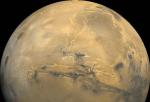 Mars: Just The Facts
Mars: Just The Facts
27.06.1997
Mars, the freeze-dried planet, orbits 137 million miles from the Sun or at about 1.5 times the Earth-Sun distance. It has two diminutive moons, towering extinct volcanos, an immense canyon system, a thin atmosphere...
 Stereo Eros
Stereo Eros
12.02.2021
Get out your red/blue glasses and float next to asteroid 433 Eros. Orbiting the Sun once every 1.8 years, the near-Earth asteroid is named for the Greek god of love. Still, its shape more closely resembles a lumpy potato than a heart.
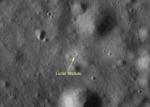 Lunar Module at Taurus Littrow
Lunar Module at Taurus Littrow
28.06.2002
Can the Hubble Space Telescope take a picture that shows the Apollo lunar modules on the Moon? With its 2.4 meter diameter mirror, the smallest object that the Hubble can resolve at the Moon's distance of around 400,000 kilometers is about 80 meters across.
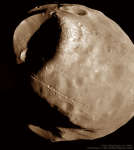 Phobos: Doomed Moon of Mars
Phobos: Doomed Moon of Mars
24.11.2018
This moon is doomed. Mars, the red planet named for the Roman god of war, has two tiny moons, Phobos and Deimos, whose names are derived from the Greek for Fear and Panic. The origin of the Martian moons is unknown, though, with a leading hypothesis holding that they are captured asteroids.
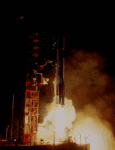 Surveyor Night Launch
Surveyor Night Launch
2.11.1996
In early November of 1967, a dramatic night launch of an Atlas Centaur rocket from Cape Canaveral lofted the successful Surveyor 6 spacecraft toward the Moon. The Surveyor series of robotic probes carried out the first US lunar soft landings in preparation for the Apollo program.
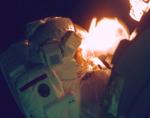 The Night Shift
The Night Shift
16.12.1998
For the orbiting International Space Station (ISS), the sun sets every 90 minutes. But working through the night, spacewalking astronauts can rely on artificial lighting. Here, the eerie glow of work-lights illuminate Space Shuttle Endeavor astronaut Jerry Ross during a night on his
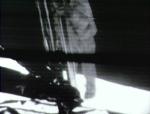 Apollo 11: Onto a New World
Apollo 11: Onto a New World
19.05.1998
A human first set foot on another world on July 20, 1969. This world was Earth's own Moon. Pictured above is Neil Armstrong preparing to take the historic first step. On the way down the Lunar Module ladder, Armstrong released equipment which included the television camera that recorded this fuzzy image.
 A Martian Valley
A Martian Valley
23.07.1999
This tantalizing close-up detail of a network of martian valleys was recorded from orbit this April by Mars Global Surveyor's camera. Water may once have flowed here but now sand dunes stripe the windswept valley floor.
 The Earth Also Rises
The Earth Also Rises
24.03.2000
The Lunar Orbiter 1 spacecraft was launched in 1966 to map the lunar surface in preparation for the Apollo moon landings. NASA's plucky robotic explorer performed its job well and pioneered this classic view of the Earth poised above the lunar horizon.
|
January February March April May June July |
|||||||||||||||||||||||||||||||||||||||||||||||||